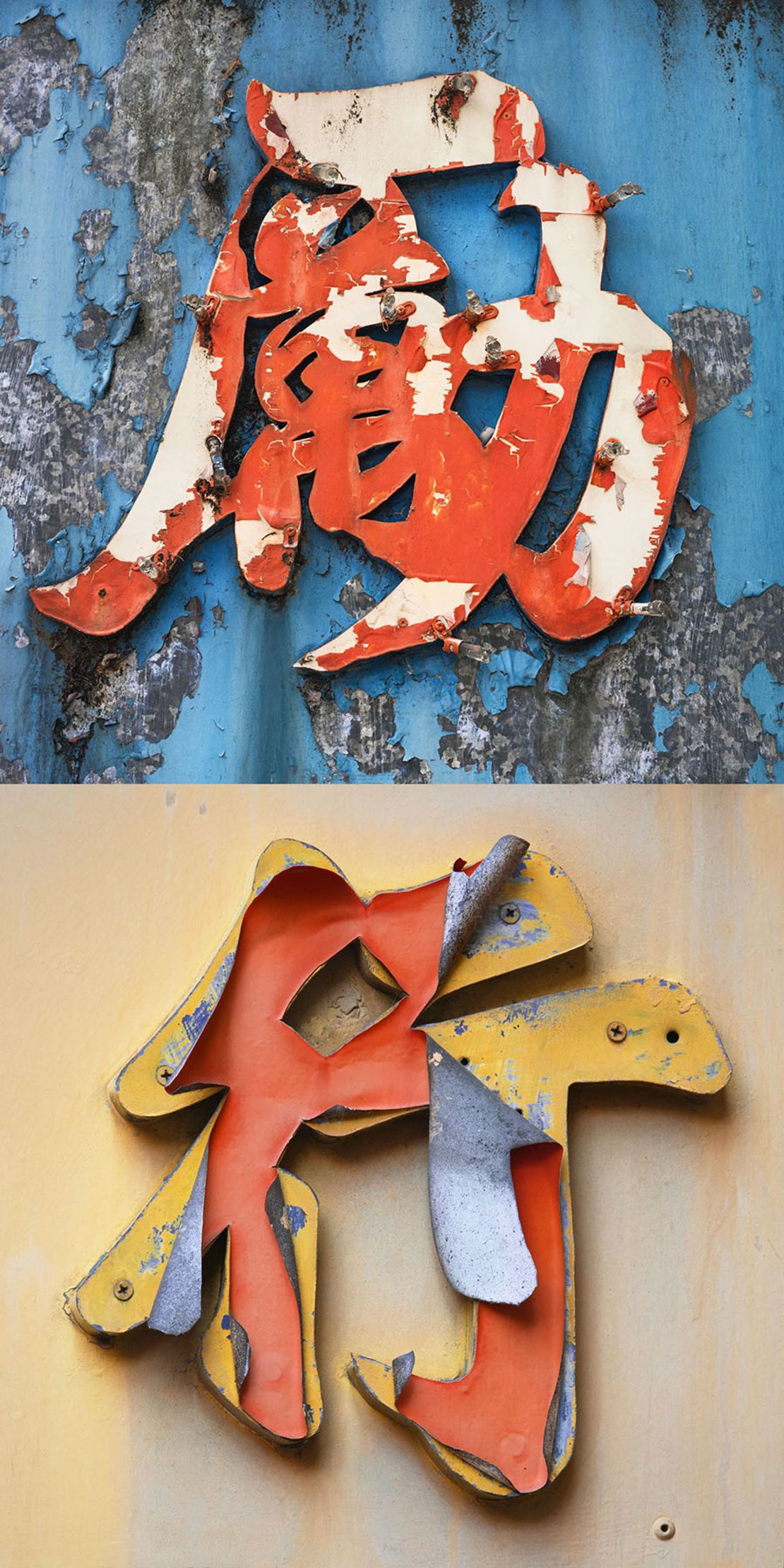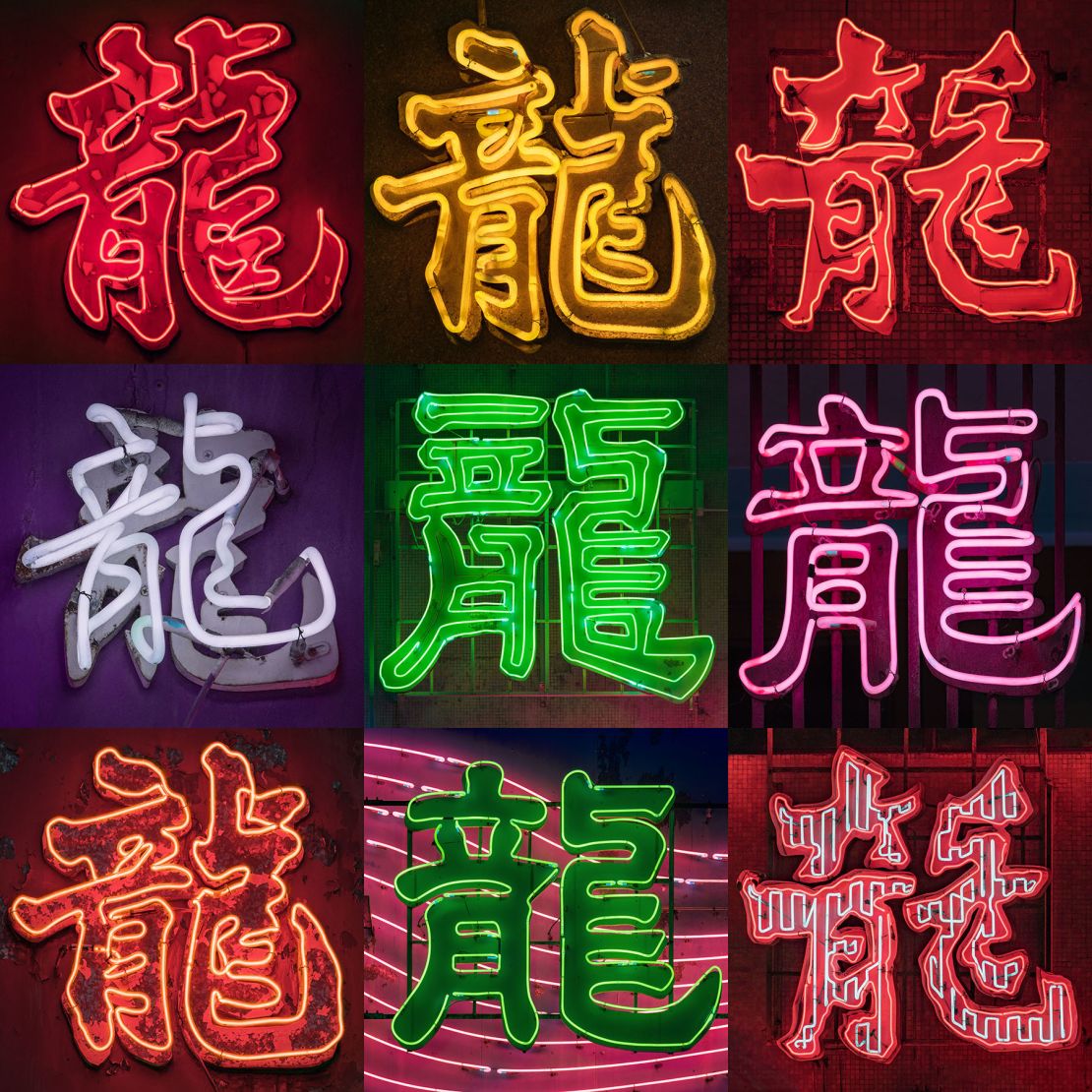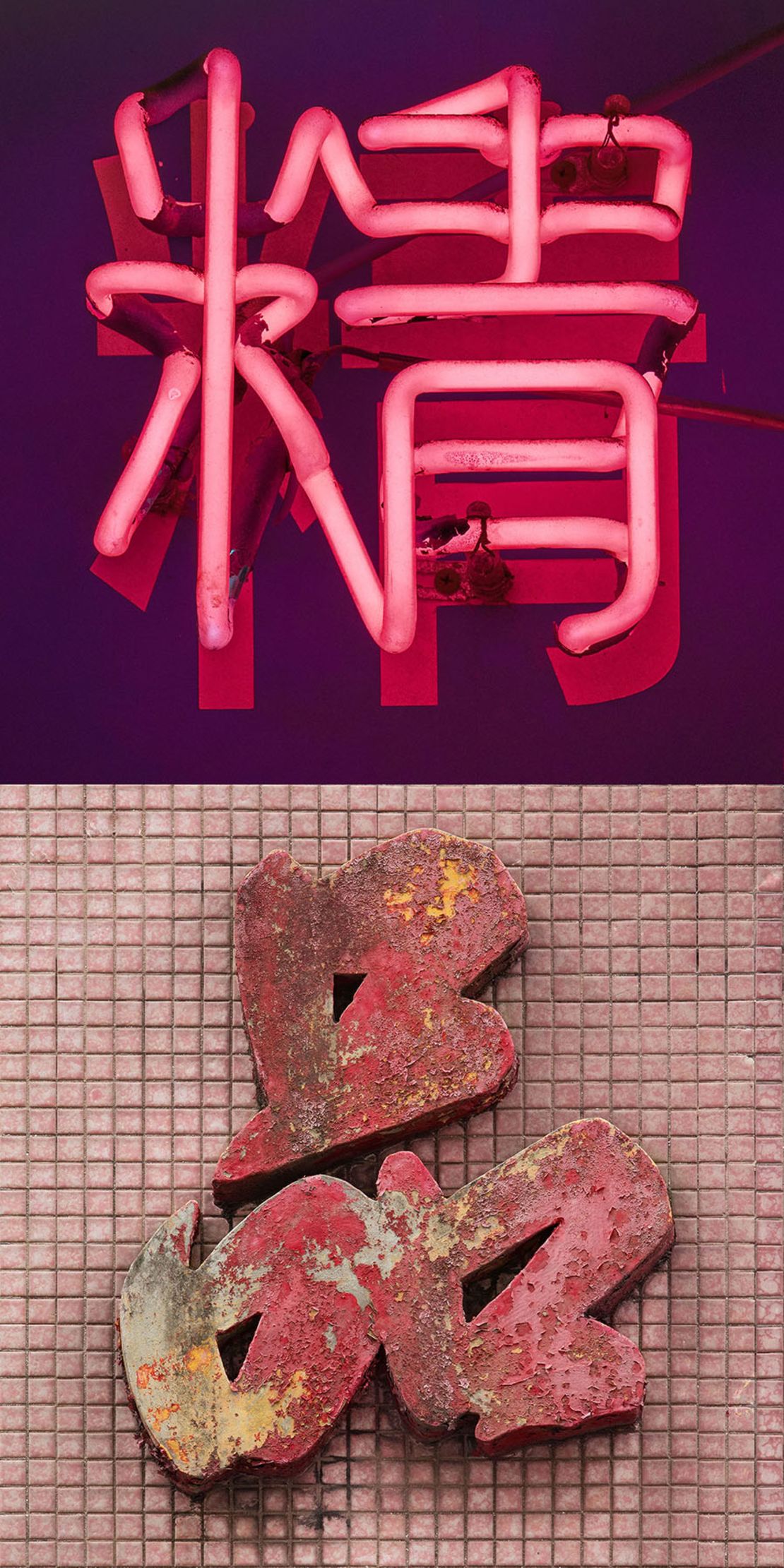For Romain Jacquet-Lagreze, the photography series “City Poetry” began as a personal project. Over the past year and a half, the French artist, who has been living in Hong Kong since 2012, has been taking photos of the city’s neon, tiled and etched street signs in an effort to learn about local culture through his camera.
“As a photographer, I’ve always been drawn to the characters you see on the city’s streets, or outside stores and buildings. Their stroke-like form, their shapes. They’re so eminently visual,” he said during an interview at Blue Lotus Gallery in Hong Kong, where his work is currently on show.
“But, of course, I didn’t know what any of them meant – until I decided to try master the language.
“That’s when I thought I should use them as my study book. It just made a lot of sense.”

Jacquet-Lagreze ventured to areas like Mong Kok, Yau Ma Tei and Sham Shui Po in Kowloon district – some of the oldest neighborhoods in Hong Kong – to shoot the traditional Chinese characters found on signs. He then started putting the images together to form sentences.
“I first replicated already existing expressions, inspired by the art of Chinese calligraphy and ‘chengyus’ in particular – a type of traditional Chinese idiomatic expression usually consisting of four characters. They are very short but hold such deep, profound connotations, metaphors and nuances,” he said. “I wanted to recreate them through photography.”
As the project evolved, he had a go at making his own brief, lyrical expressions, like “forgotten garden,” “inspirational urge” and “reaching the dream.” His wife, who is from Hong Kong and a linguist, helped him through the process, explaining the meaning of each word and character, and suggesting how they might fit together.

When collaging characters together, Jacquet-Lagreze looked not only at their etymology, but their visual cohesiveness, too. He picked characters with complementary colors or similar backgrounds, or typographies whose strokes would fit with each other despite belonging to completely different signs.
“I wanted the poems to be meaningful both linguistically and pictorially,” he said.
As Jacquet-Lagreze continued shooting, he started paying increased attention to the conditions the signs were in. Some were rusting or peeling, others were crumbling or falling apart. The series became a way to preserve them, an homage to a vanishing side of the city’s streetscape.
“Hong Kong is going through a lot of changes,” he said. “We’re at a time where the very notion of Hong Kong identity is being questioned and challenged so much. The city’s culture is at risk. That includes the language, with China pushing people to adopt simplified characters over traditional ones, which are used (in Hong Kong). But it also extends to quintessentially Hong Kong trades and crafts like neon-sign making.”
Fading traditions
Neon signs, an iconic fixture of the city’s streets since the 1950s, have been steadily disappearing over the past decades, as the government has been restricting their production and replacing them with LED lights, which are more energy efficient.
Relentless real estate development and a skyrocketing rental market have forced local shops and traditional businesses to close, taking their signs with them. Jacquet-Lagreze said many of the signs he previously shot are no longer there.
The poem that best reflects the photographer’s worries and frustrations is the simply titled “Hong Kong Culture.” In it, Jacquet-Lagreze used faded, worn-out signs to represent characters in both “Hong Kong” and the word “culture.”
“My work isn’t political, but I wanted to make a clear statement with this specific line,” he explained. “It’s a critique of where things are headed.”
Jacquet-Lagreze’s photographic work in Hong Kong started in 2012 with “Vertical Horizon,” an architectural series that was well-received on social media and gave him international visibility. But his focus has shifted in recent years.
“The more I get to know Hong Kong, the more I call this home, the more my work turns to the micro aspects of the city that really show its character, yet often go unnoticed. I am more interested in the soul than the shell,” he said.

“Wild Concrete,” a project he published in 2014, focused on the ubiquitous banyan trees found across much of the cityscape, while “The Blue Moment,” from 2016, explored the duality of Hong Kong’s nature and concrete at dusk. “Concrete Stories,” started last year, is a collection of human activities captured across the few remaining shared residential rooftops in the city: a lone man doing tai chi, a boy riding a bike, a girl skipping rope.
“‘Concrete Series’ and ‘City Poetry’ are both ongoing series,” Jacquet-Lagreze said. “I will keep doing them till I can’t. My main intention is to show the poetry of a city disappearing.”
“City Poetry” is on at Blue Lotus Gallery in Hong Kong until July 14, 2019.











